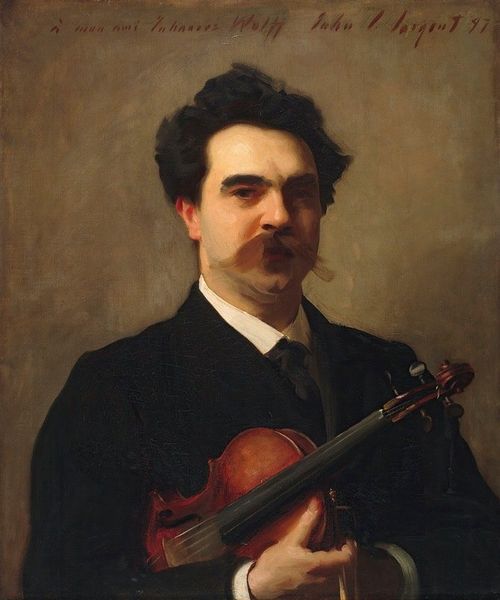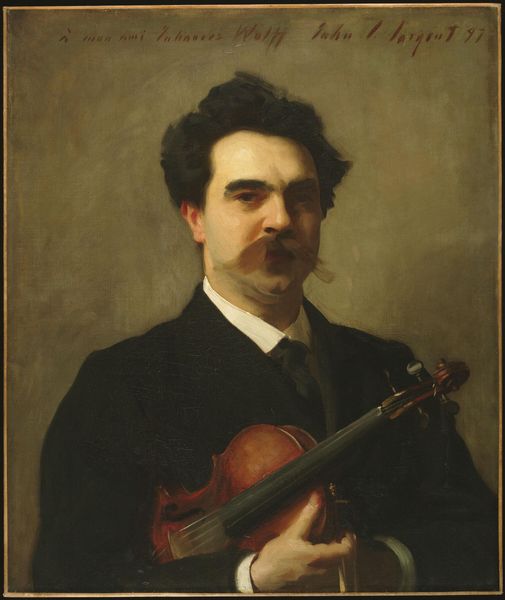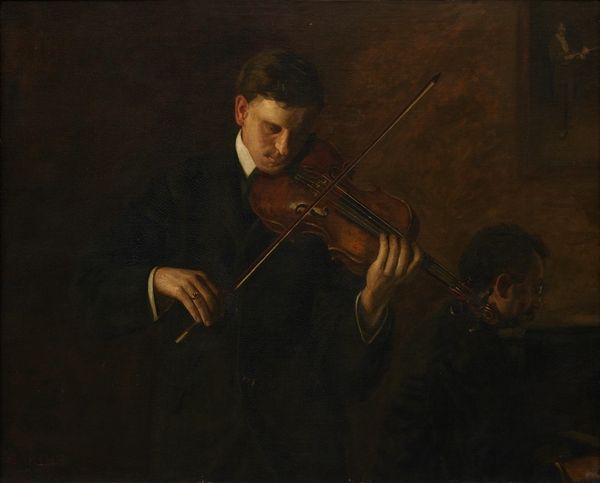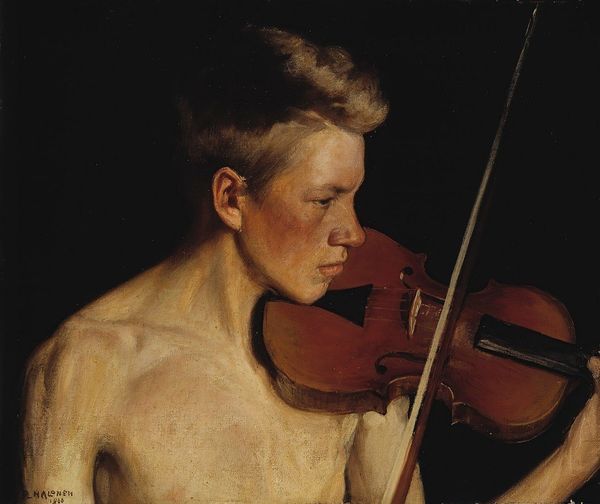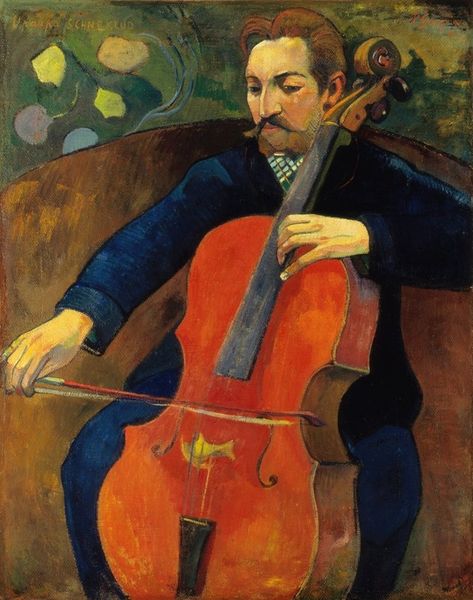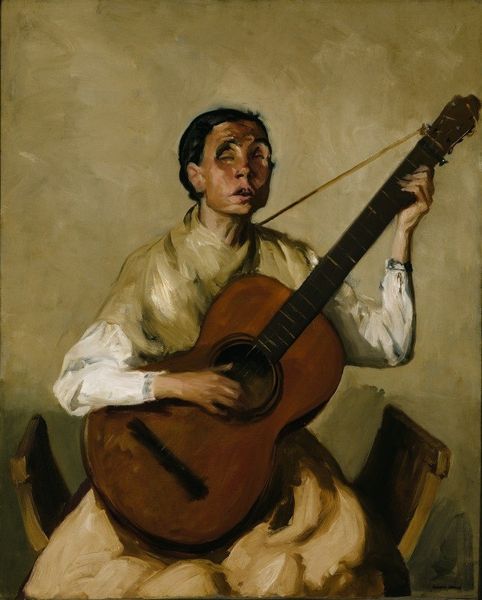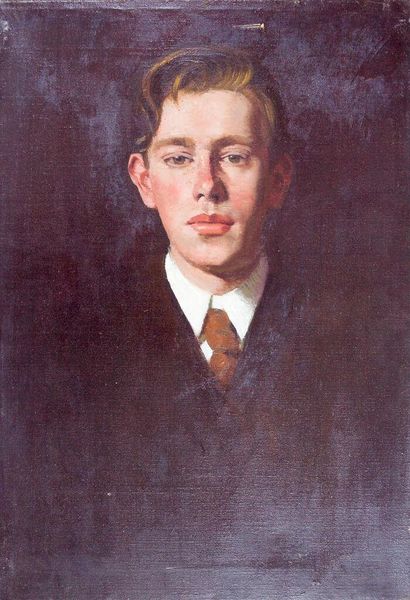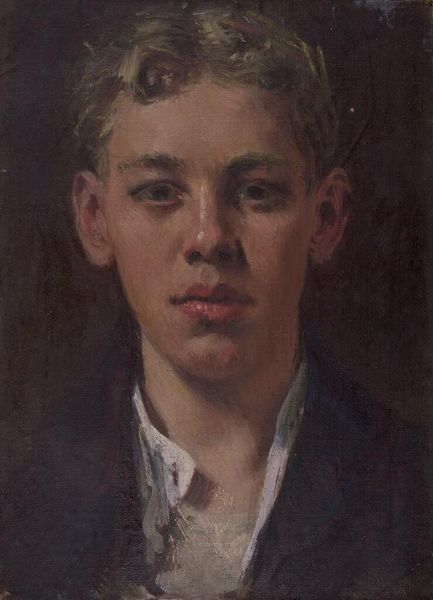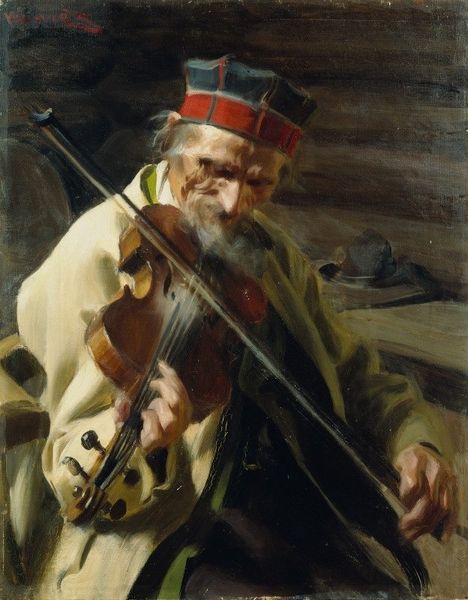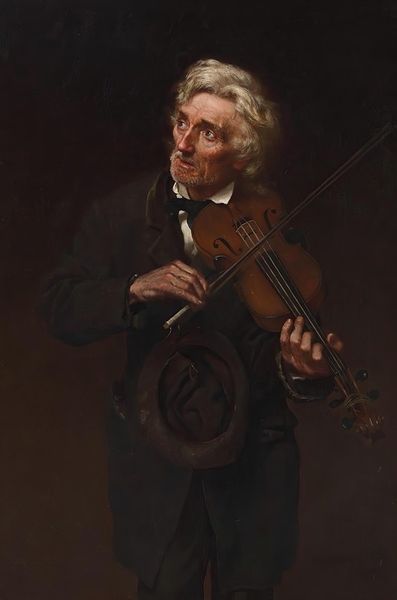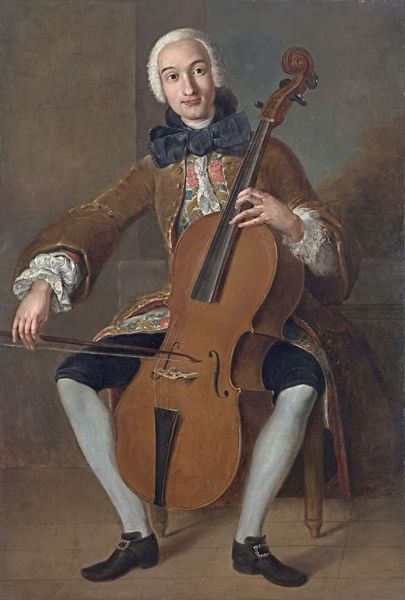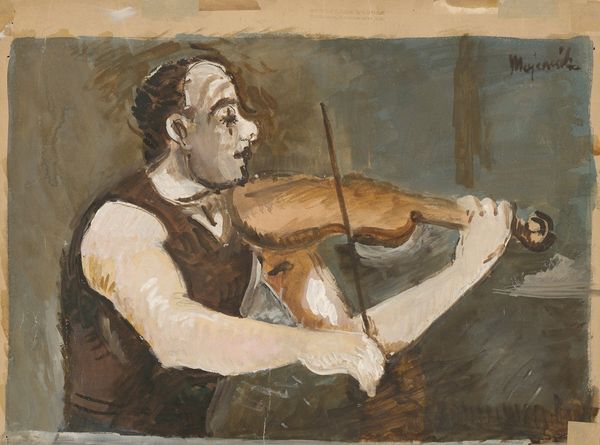
Copyright: Public domain
Curator: Here we see Ivan Kramskoy's 1882 oil painting, “Portrait of Nikolay Kramskoy, the Artist’s Son,” held in the Tretyakov Gallery in Moscow. Editor: He looks thoughtful, even a little melancholic. And that muted palette gives a somber, perhaps even slightly claustrophobic, feeling to the scene. Curator: It’s fascinating how the realism movement influences this academic portrait, wouldn’t you agree? Think of the production involved, the canvas stretched, primed, the slow layering of oil paint pigments… What kind of labour went into those precise renderings of fabric and flesh tone? Editor: Precisely! Consider too the power dynamics at play—a father depicting his son. What unspoken expectations are embedded in this gaze, in this seemingly straightforward representation? We must recognize how artistic production can reinforce or subtly challenge patriarchal structures and class ideals. Curator: I also see the influence of romanticism in the idealized rendering. Notice the careful details; from the gentle light catching the curve of the violin, all meticulously crafted, demonstrating the artist’s skillful labor in creating illusion and representing the materiality of both the boy and his instrument. Editor: Let’s not forget Russia in the 1880s; the social upheaval brewing beneath the surface. The painting feels very internal, very focused on individual psychology, a counterpoint to the societal turmoil outside the frame, the rise of revolutionary sentiments questioning familial legacy. Curator: His craft speaks across generations, each brushstroke representing countless hours. Think of the craftsmanship not just as skill, but also devotion, labour, almost religious commitment! It is about more than representation; the paint is as meaningful as the painted. Editor: This work invites us to consider more than just artistic skill. It calls for us to examine our inherited social contracts, our expectations of future generations, and our understanding of domestic representation under an autocratic state. Curator: The labour to memorialize is a potent reminder to stop and be present, both now and in our remembered history. Editor: Yes, a sober reminder of how personal expression becomes a reflection of much larger forces, challenging and expanding how we read visual narratives.
Comments
No comments
Be the first to comment and join the conversation on the ultimate creative platform.
